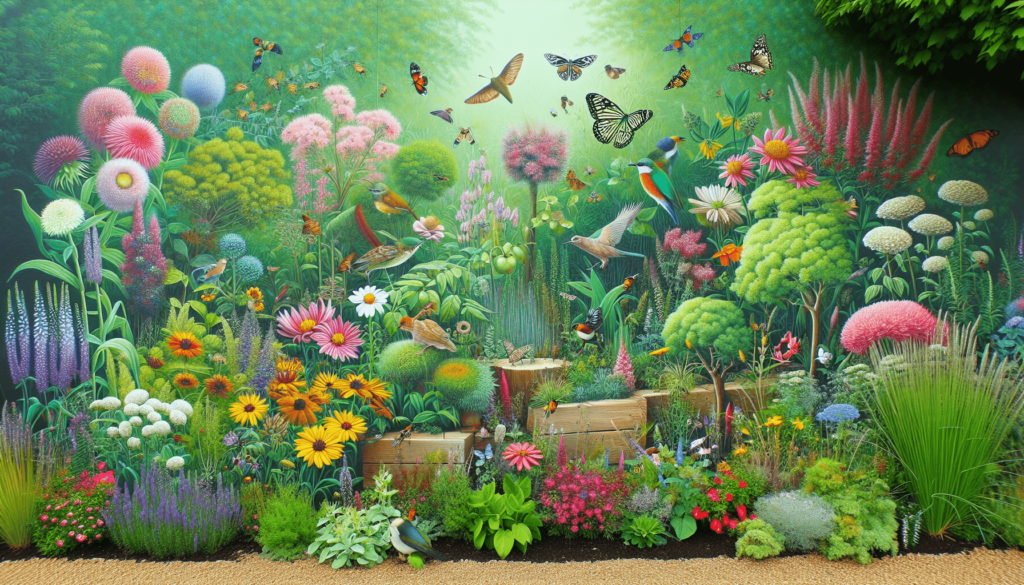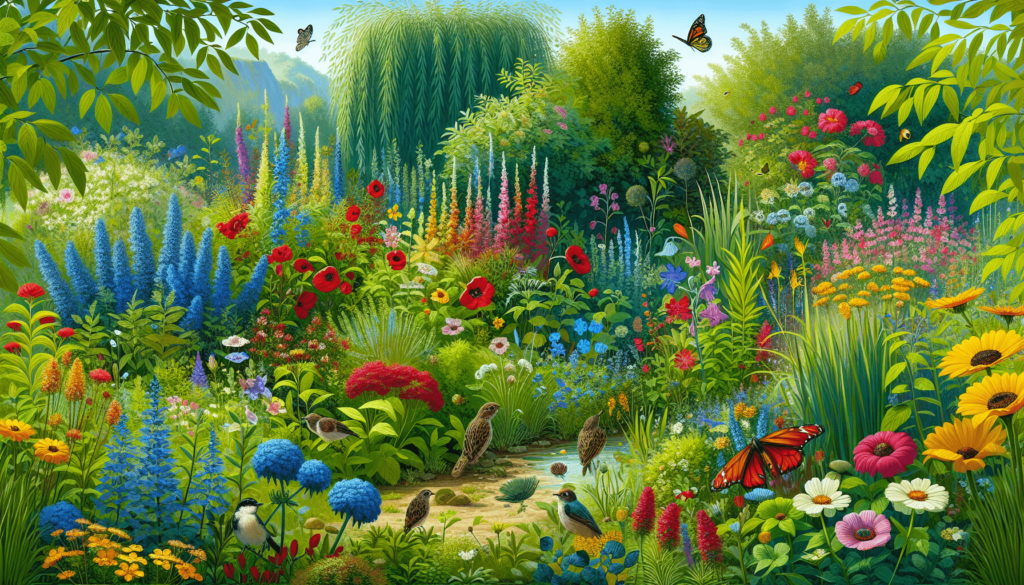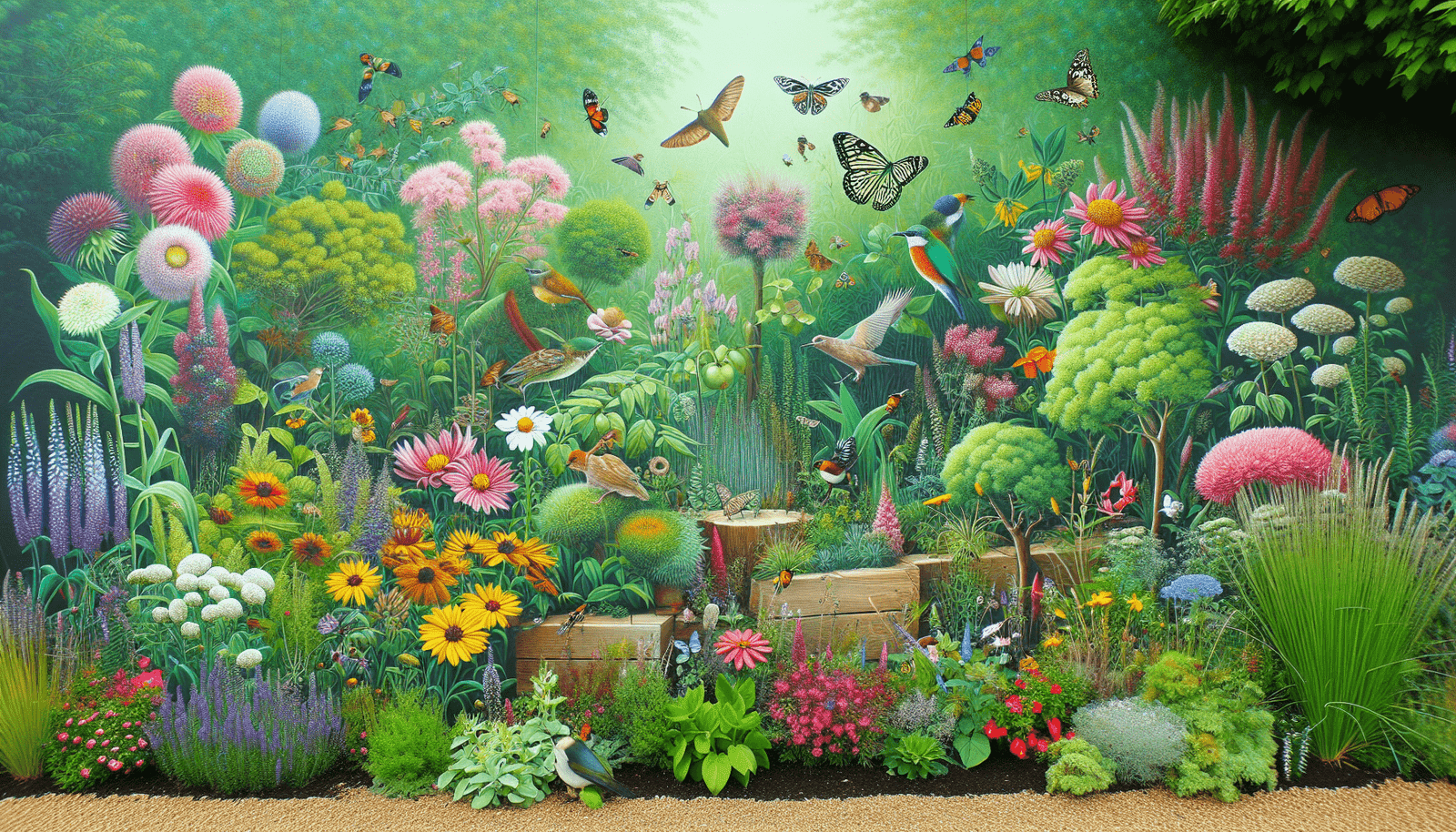Designing a Wildlife-Friendly Garden
Have you ever wondered how you can create a garden that not only looks beautiful but also attracts a variety of wildlife? Designing a garden with wildlife in mind can have a positive impact on your local ecosystem and provide a habitat for birds, insects, and other animals. In this article, we will explore how you can design a garden for maximum wildlife impact, creating a harmonious environment that benefits both you and the creatures that call your garden home. Let’s get started!
Choosing Native Plants
When designing a garden for wildlife, one of the most important considerations is the selection of plants. Native plants are a crucial element in attracting wildlife to your garden, as they provide food and shelter that local animals are familiar with. By choosing native plants, you can create a habitat that supports the biodiversity of your region and ensures that your garden remains a vital ecosystem for wildlife.
Benefits of Native Plants
Native plants have evolved over time to be well-suited to the climate, soil, and conditions of a particular region. This means that they require less maintenance, are more resistant to pests and diseases, and are better able to attract and support local wildlife. By incorporating native plants into your garden design, you can create a sustainable and vibrant ecosystem that benefits both the environment and the creatures that inhabit it.
Creating Different Layers
To maximize the wildlife impact of your garden, it is important to create different layers of vegetation that provide food, shelter, and nesting sites for a variety of animals. By incorporating trees, shrubs, and ground cover plants into your garden design, you can create a diverse and dynamic habitat that attracts a wide range of wildlife species.
Tree Layer
Trees are an essential component of a wildlife-friendly garden, providing nesting sites, food sources, and shelter for birds, squirrels, and other animals. Selecting a variety of trees that produce nuts, seeds, or fruits can attract a diverse range of wildlife to your garden and create a lush and vibrant environment for both you and the creatures that visit.
Shrub Layer
Shrubs are another important element in creating a diverse garden ecosystem, providing cover for small animals, nesting sites for birds, and food sources for pollinators. By planting a mix of flowering and fruiting shrubs, you can attract a variety of wildlife to your garden and create a visual and sensory feast for both you and the creatures that call your garden home.
Ground Cover Layer
Ground cover plants play a vital role in creating a healthy and sustainable garden ecosystem, providing protection for the soil, food sources for insects, and shelter for small mammals. By selecting a mix of native ground cover plants, you can create a diverse and resilient habitat that supports the biodiversity of your region and encourages a wide range of wildlife to thrive in your garden.

Providing Water Sources
Water is a vital element in attracting wildlife to your garden, as many animals rely on it for drinking, bathing, and breeding. By incorporating water sources such as ponds, bird baths, or rain gardens into your garden design, you can create a welcoming environment that attracts a diverse array of wildlife species and provides essential resources for their survival.
Ponds
Ponds are a wonderful addition to a wildlife-friendly garden, providing a habitat for frogs, toads, and other aquatic creatures, as well as a water source for birds and insects. By creating a pond with shallow edges, submerged plants, and rocks for basking, you can attract a variety of wildlife to your garden and create a dynamic and vibrant ecosystem that benefits both you and the creatures that visit.
Bird Baths
Bird baths are a simple and effective way to attract wildlife to your garden, providing a source of clean water for birds to drink and bathe in. By placing bird baths in open areas with a clear line of sight, you can create a welcoming environment for a variety of bird species and enjoy the sights and sounds of these beautiful creatures as they visit your garden.
Rain Gardens
Rain gardens are designed to capture, filter, and absorb rainwater, reducing runoff and providing a habitat for a variety of plants and animals. By incorporating a rain garden into your garden design, you can create a sustainable and eco-friendly environment that attracts birds, butterflies, and other wildlife species, while also helping to conserve water and reduce pollution in your local environment.
Providing Shelter and Nesting Sites
In addition to food and water sources, wildlife also need shelter and nesting sites to thrive in your garden. By incorporating features such as bird houses, bat boxes, and bee hotels into your garden design, you can create a welcoming environment that provides essential resources for a variety of wildlife species and helps to support the biodiversity of your region.
Bird Houses
Bird houses are a great way to attract nesting birds to your garden, providing shelter and security for parent birds and their young. By installing bird houses in a variety of sizes and styles, you can attract a range of bird species to your garden and create a vibrant and dynamic habitat that benefits both you and the feathered friends that call your garden home.
Bat Boxes
Bats are important pollinators and insect-eaters that play a vital role in maintaining a healthy ecosystem. By installing bat boxes in your garden, you can provide shelter and roosting sites for these beneficial creatures, helping to control insect populations and support the biodiversity of your region. Bat boxes should be placed in a sunny location away from bright lights and predators, providing a safe and secure environment for bats to roost and raise their young.
Bee Hotels
Bees are essential pollinators that play a crucial role in the reproduction of many plant species. By installing bee hotels in your garden, you can provide nesting sites for solitary bees, as well as shelter for other beneficial insects. Bee hotels should be placed in a sunny location with easy access to food sources, offering a safe and welcoming environment for bees to nest and forage for nectar and pollen.

Avoiding Chemicals and Pesticides
Chemicals and pesticides can have a negative impact on wildlife in your garden, harming beneficial insects, birds, and other animals that rely on a healthy and diverse ecosystem. By avoiding the use of synthetic chemicals and pesticides in your garden, you can create a safe and welcoming environment for wildlife and help to support the biodiversity of your region.
Natural Pest Control
Instead of relying on synthetic chemicals and pesticides to control pests in your garden, consider using natural and organic methods to manage insect populations. Planting companion plants, attracting beneficial insects, and practicing crop rotation are all effective ways to control pests without harming wildlife or disrupting the balance of your garden ecosystem.
Companion Planting
Companion planting is a gardening technique that involves planting different species of plants together to promote mutual growth and deter pests. By selecting companion plants that attract beneficial insects or repel common garden pests, you can create a healthy and sustainable garden environment that supports the biodiversity of your region and provides essential resources for wildlife.
Attracting Beneficial Insects
Beneficial insects such as ladybugs, lacewings, and hoverflies play a vital role in controlling pest populations and pollinating flowers in your garden. By planting a variety of nectar-rich flowers, herbs, and shrubs that attract beneficial insects, you can create a welcoming environment that supports the balance of your garden ecosystem and provides essential resources for wildlife to thrive.
Maintaining a Wildlife-Friendly Garden
Once you have designed a garden for maximum wildlife impact, it is important to maintain and care for your garden to ensure that it continues to provide essential resources for local wildlife. By practicing regular maintenance, monitoring wildlife activity, and making adjustments as needed, you can create a vibrant and dynamic habitat that benefits both you and the creatures that call your garden home.
Regular Maintenance
Regular maintenance is key to preserving the health and vitality of your garden ecosystem, ensuring that it remains a welcoming environment for wildlife to thrive. By weeding, pruning, watering, and mulching regularly, you can create a sustainable and vibrant garden that attracts a diverse array of wildlife species and provides essential resources for their survival.
Monitoring Wildlife Activity
Monitoring wildlife activity in your garden can help you to understand the needs and behaviors of the animals that visit, allowing you to make informed decisions about how to best support their habitat. By observing bird behavior, tracking insect populations, and noting changes in plant growth, you can create a dynamic and responsive garden environment that adapts to the needs of local wildlife and provides essential resources for their survival.
Making Adjustments
As your garden grows and evolves, it may be necessary to make adjustments to support the changing needs of local wildlife. By planting new species, adding additional water sources, or installing nesting boxes, you can create a welcoming environment that attracts a diverse array of wildlife species and provides essential resources for their survival. Making adjustments based on observations and feedback from local wildlife can help you to create a vibrant and dynamic garden that benefits both you and the creatures that call it home.
Conclusion
Designing a garden for maximum wildlife impact is a rewarding and fulfilling process that can have a positive impact on your local ecosystem and provide essential resources for a variety of wildlife species. By choosing native plants, creating different layers of vegetation, providing water sources, shelter, and nesting sites, avoiding chemicals and pesticides, and maintaining a wildlife-friendly garden, you can create a diverse and dynamic habitat that benefits both you and the creatures that call your garden home. So go ahead and design a garden that welcomes wildlife with open arms, creating a harmonious environment that supports the biodiversity of your region and provides a vibrant and dynamic habitat for a variety of animals. Happy gardening!

